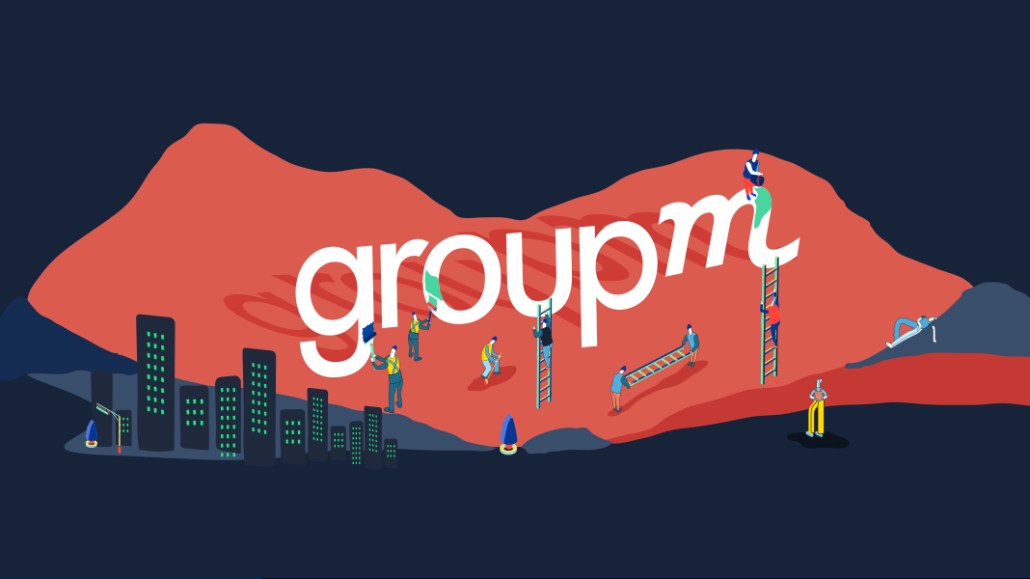
Still lacking an industry standard definition for made-for-advertising sites (MFAs), one of the largest media agencies, GroupM, has taken matters into its own hands to more thoroughly vet sites as potential MFAs within its programmatic business.
Claiming to be the first media buying agency to take this step, GroupM has added protections against MFAs across all of the inclusion lists in all the markets it operates in, like its m-list in the U.K. Inclusion lists are a set of approved publisher websites and are used to inform where buyers spend their clients’ programmatic advertising budgets. Lately, more and more marketers have voiced their concerns about their ads showing up on MFA sites, putting pressure on buyers to avoid those domains.
Publisher domains included on GroupM’s inclusion lists are now vetted against programmatic supply chain management company Jounce Media’s list of MFAs, which is updated daily based on a set of six KPIs. This list, as well as Jounce’s criteria for determining if a publisher is deemed an MFA, has been widely adopted by the ad industry in lieu of a universal definition from a trade body. GroupM first started testing Jounce’s MFA list in beta back in June.
“MFA means one specific thing to Jounce. GroupM has made a decision that they are comfortable adopting that methodology and it’s the same list for everybody,” said Chris Kane, founder of Jounce Media.
While GroupM does not have a say in what criteria Jounce Media uses to create its MFA list, Rory Latham, senior director of global investment, programmatic at GroupM, said a conversation will occur between Jounce Media and any publishers that show up on the MFA list to validate why the publisher was flagged. So far, Latham said there haven’t been any publishers on GroupM’s inclusion lists who’ve popped up unexpectedly on Jounce’s MFA list.
“Obviously, we don’t have a definition [for MFAs] yet as an industry and so we’re still trying to define that within our own organization. For now, we’re [working with] Jounce on the definition that they’re using and challenging it if we’ve got any questions on any of the domains that have been flagged to understand why that is,” Latham said. Through those conversations, he said GroupM will then be able to relay the reasons for changing a publisher’s position on the inclusion list to the media owners themselves to aid in transparency.
The addition of Jounce’s daily updated MFA lists to GroupM’s vetting process is meant to help the cadence for which the agency’s inclusion lists are updated, according to Latham, but it’s unclear if GroupM will adopt that speed internally. Currently, the agency’s m-list, which encompasses approximately 6,000 domains from 50-60 publishers, is only updated on a quarterly basis. What’s more, GroupM is not trying to keep to a flat number when it comes to the size of its inclusion lists, but will add or reduce publishers as necessary based on the MFA list provided by Jounce.
As one of the first media buying agencies to proactively remove MFAs from their programmatic businesses, GroupM is setting a precedent within the advertising industry that the vanity metrics MFA sites play into — like high viewability and high completion rates at bottom-of-the-barrel CPMs — are not only questionable but impractical when it comes to those impressions turning into actual sales on the part of consumers.
Ruben Schreurs, chief strategy officer at media management firm Ebiquity, told Digiday the integration of Jounce’s technology into one of the ad industry’s largest programmatic buying systems was a significant development and one that others are likely to follow.
“This will be a big blow [to MFA websites] if they roll this out the right way,” Schreurs said, noting how GroupM is behind significantly more than a quarter of all media dollars spent. “The days of using inflated vanity metrics are numbered,” which is a sentiment that both Latham and Kane echoed.
One holding company executive who spoke on the condition of anonymity noted that MFAs are more easily spotted — and avoided in many cases — by looking for clutter as a form of media evaluation. “I would venture to guess [that] nearly 95% of what we would determine in an MFA definition is probably clutter. That’s something that we would value much lower as we’re thinking about what are the types of sites that our brands, and the clients we represent want to connect with consumers on.”
And yet, “there still is a tremendous amount of pressure that brands put on agencies and the agencies put on DSPs to drive down prices and that I doubt goes away anytime soon,” said Kane.
But if anything is going to help turn buyers off of MFAs, it’ll be the recent buzz created by the Association for National Advertisers’ report, published in June, that has caused a crescendo of attention falling onto MFAs. This attention is what could finally provoke real change in how marketers measure the success of their programmatic ad campaigns, Kane said.
“Buyers have to vote with their wallets. That’s what GroupM is doing. And the supply side will react to the way the buyers buy. MFA only exists because buyers reward them and MFAs will go away if buyers don’t reward it,” said Kane.
Schreurs agreed, adding that “there’s no way that Publicis, Dentsu, IPG and Omnicom are not going to follow.”
While not all holding companies responded in time to comment for this story, most of them are working to not only define MFAs — an important first step to solving problems around them — but then take steps to mitigate them. Some are speaking with or already working with Jounce in some form or another, but carbon emission measurement firms like Scope3 can be instrumental in helping agencies root out and avoid MFAs.
“There’s a big push in the market now for increased transparency [and] more visibility into the supply chain, and all the things that Chris Kane and Jounce’s methodology encompasses is good,” said an executive at one holding company who spoke on condition of anonymity.
More in Media Buying

As Integral Ad Science marks its fourth anniversary on the Nasdaq, speculation mounts over its future
Efforts are underway to take IAS private but there are varying levels of interest from private equity groups.

Media Buying Briefing: Two years later, media buyers still aren’t fully sold on The Trade Desk’s Kokai platform
Two years after its launch, The Trade Desk’s Kokai tool has acquired a mixed reputation among the agency media buyers it was designed for.

The Rundown: The regulatory hurdles still in the way of the Omnicom-IPG merger
British, Australian and EU regulators are all looking into mega agency merger.







